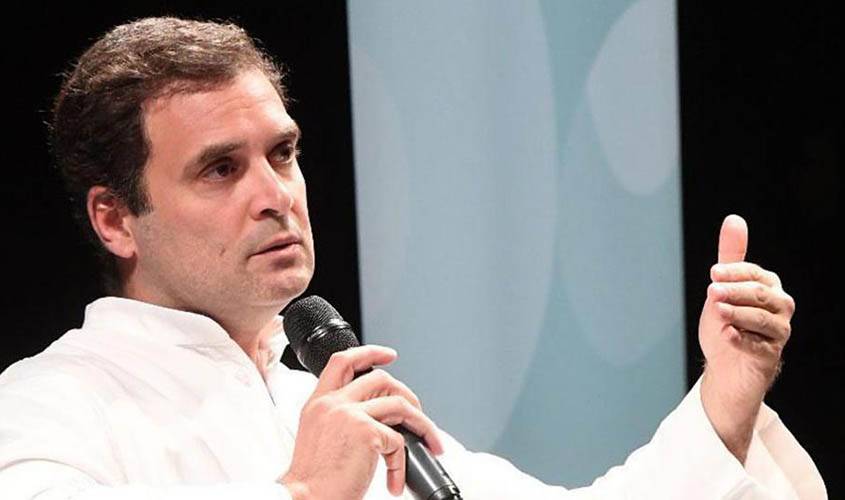Every person has a persona, about which most people, especially public figures, are very particular. Politicians are hugely more careful about their personas than others. A feature common among all politicians, Indian as well as world, is the uniformity of physical appearance. The solitary exception to the rule is Congress president Rahul Gandhi.
A politician never changes his appearance or attire. The clean-shaven remain clean-shaven (e.g., Jawaharlal Nehru, Rajiv Gandhi, Atal Bihari Vajpayee); the moustachioed, moustachioed (L.K. Advani); the bearded, bearded (Narendra Modi). They wear kurta-pajamas, kurta-dhotis, trousers with bandhgalas (but rarely with a tie, certainly not a Prime Minister). In the West, dark-hued suit with a tie is a must for formal occasions. Women politicians championing conservative values prefer appropriate attire (Sushma Swaraj, Smriti Irani wear saris) and avoid what they regard as inappropriate (Margaret Thatcher never wore trousers).
Rahul Gandhi is different. He has appeared clean-shaven and bearded, in kurta-pajama and jeans-T-shirt. Since the physical appearance of a politician is an integral part of his (or her) persona, the lack of cohesion in Rahul’s appearance shows confusion; and it is confusion not just about his image, but also his politics and ideology.
Now cynics may point out that politicians are least bothered about ideals and ideologies; what interests them is power, by means fair or foul; ends justify means. That may be true to a large extent, especially in today’s context. But it is also true that ideas, ideals, and ideologies—however insignificant role they may play in realpolitik—are never completely obliterated from the political arena. However cynical a politician may be, he or she can never cross certain red lines. For instance, a leader from the Bharatiya Janata Party would never approvingly use the term “majoritarian” and a communist, “market economy”.
In terms of persona, a BJP leader would never like to be clicked wearing a suit and tie while smoking a cigar. Similarly, a communist leader would not like to be seen in a temple with a tika on his forehead, even though it was under family pressure. The BJP leader knows his sanskars; the commie, his dialectical materialism. They know that such appearances would be bad for their respective images.
But what does Rahul Gandhi know? Or, to be precise, what does he want to be known about him? What kind of persona does he want for himself? We don’t know; we can’t even be sure if he himself knows.
We can only guess. It looks like his uniqueness in terms of appearance emanates from a complete lack of not just political philosophy but also of a coherent set of expedient ideas. It is not that all his family members were political philosophers or great scholars. Nehru, the most erudite among the lot and also the most idealistic, knew what he was doing. Hence the terms Nehruvian Consensus and Nehruvian secularism.
Indira Gandhi was not an idealist, but she was shrewd enough to tap the romanticism of the Left and pinkish intellectuals to masquerade further her own ends. Rajiv Gandhi, though politically naïve, at least had the commonsense of a normal householder and did some good for the country (computerisation, for instance); after all, he was the only Prime Minister, other than Manmohan Singh, to have earned a living as a middle-class person. Sonia Gandhi too was perspicacious enough to seek and obtain the support of the rainbow coalition of salon socialists, eco-nuts, and Luddites. It cost the nation a great deal, but served her purpose well: she was in charge for a decade.
In fact, from Nehru to Sonia, everybody was at the helm of affairs; they had their coteries, aides, advisors, courtiers, jesters, lackeys, etc.; but decision making was the prerogative of the dynast.
Rahul on the other hand, seems to have given up that prerogative. The coterie around him does more than counsel; it seems that his aides make decisions that he accedes to, often without much scrutiny and contemplation. He seems to differ from his successful family members in the way Later Mughals differed from the Great Mughals. Till Aurangzeb, whenever there was a war for succession among princes, nobles threw their weight behind the contenders; the latter led. After Aurangzeb, it was the cliques of nobles who fought the battles with princes as their nominal leaders. Something similar is happening now in the Congress.
Some adviser tells Rahul to appear combative—and he says “chowkidar chor hai”. Someone else tells him to be loveable and merciful—and Rahul becomes a Gandhi and embraces Prime Minister Narendra Modi. Someone tells him to appear rebellious, for he is young and thus must appeal to youth—and he tears apart an ordinance, even though it is brought out by his own government.
The Rahul Gandhi persona is not in command; the coterie is.

